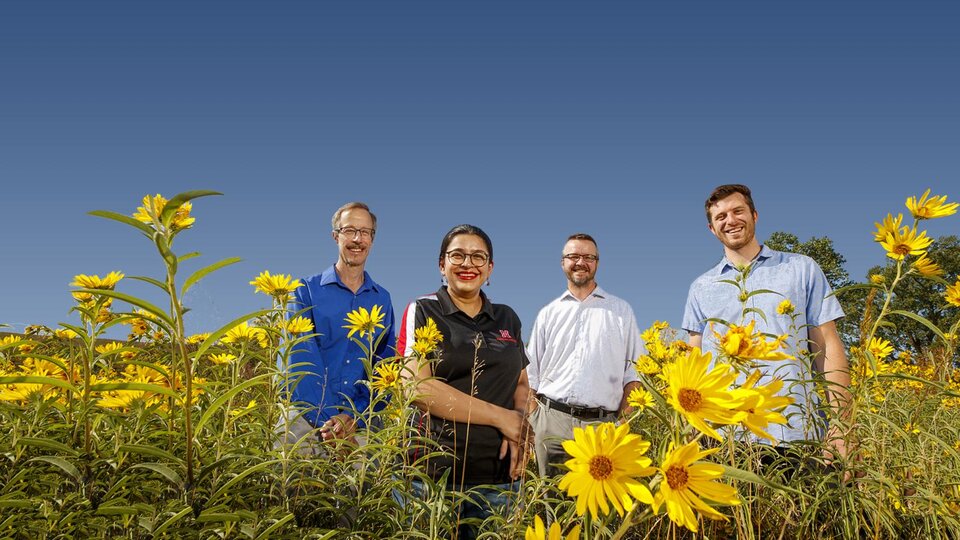The Nebraska-Montana EPSCoR (Established Program to Stimulate Competitive Research) project focused on developing innovative technologies to predict and manage ecological regime shifts before they caused irreversible damage. By leveraging spatial informatics, resilience science and stakeholder engagement, the project aimed to address environmental challenges like vegetation changes, which affect ecosystem services critical for rural economies and public welfare.
Billions of dollars are directed each year to reverse environmental degradation and to prevent ecosystem service collapses of regional social-ecological systems. Much of the science performed to manage these regional systems has historically been reactionary—investigating causes of major ecological regime shifts (e.g., toxic algal blooms) to better understand pathways for reversal or avoidance in the future.
Waiting to respond until environmental problems occur is usually not in the best interest of society, as many ecosystem functions cannot be readily restored once they become degraded. For this reason, there has been minimal success in preventing ecological shifts and their negative consequences, including biological invasions, degradation of water quality and loss of ecosystem services such as pollination and soil stabilization.
Tracking and predicting large-scale ecological transitions are of national and international importance and key to securing livelihoods and security in a rapidly changing world.

Collaboration at Convergence
The long-term goal of this EPSCoR collaboration was to build capacity at the convergence of individual faculty programs to develop and implement innovative technologies capable of solving problems of national importance. Collaborating faculty at the University of Nebraska and University of Montana were motivated by a shared awareness that the ecosystem services upon which humanity relies are becoming increasingly threatened by the loss of ecological resilience and accelerated environmental change.
Food and water security, rural economies, water rights, wildfire disaster avoidance and even funding for public school education are all threatened in the participating EPSCoR states as a result of simple transitions in vegetation that are unmatched during the lives of previous generations of resident citizens.
This research and collaboration were built on five convergence points which established a platform for sustaining research productivity through recruitment and training of early-career faculty, a nationally recognized resilience-science education program and greater access to cyberinfrastructure among public and private stakeholders.
Resilience Informatics and Next-Generation Vegetation Monitoring
Ecosystem management has largely focused on diagnosing and treating regime shifts, making ecosystem management a reactive discipline. In our EPSCoR project, we took a more proactive approach. With resilience informatics, we linked recent advances in spatial resilience theory, state-of-the-art landcover data and powerful geospatial cloud computing. New mapping technology was developed by the University of Montana, powered in partnership with Google, that allowed for the tracking of vegetation change at unprecedented scales in both space (United States rangelands from the Great Plains to the Pacific Ocean at a 30-m resolution) and time (annually from 1984–present). This project converged, for the first time, critical components of data, technology and theory, making it possible to screen for, and spatially image, the spatial order of regime shifts in ecological systems.
Socio-Economic and Behavioral Analysis for Improved Environmental Governance
Many social factors exist that influence the rate of adoption of best management practices in a landscape. Culture, economics, politics and governance can all determine the ability of resource users and managers to adapt to rapid environmental change. A multidisciplinary social science team, with expertise in environmental governance, social psychology, business, and experimental and behavioral economics, came together to better understand the barriers and opportunities to applying innovative technological approaches to build resilience across rural, working rangelands.
Science and Policy
Over the years, there has been a prevailing call for the next generation of scientists to translate science into policy. At the same time, multiple barriers have prevented rapid adoption of scientific information and the closing of science-policy gaps. Our convergence approach leveraged advancements in computer science and knowledge of linguistic structure to explore prescriptive or suggestive technical guidance documents available in the public domain. With these technological advances, we identified potential motives, attitudes and subtle influences of the agency toward management actions and outcomes.
Science and Management
Translating scientific research into practical management strategies has long been a challenge in working landscapes. However, we identified new collaborative groups (stakeholders, researchers and policymakers) that emerged to collectively address social-ecological change threatening individuals and communities. When we coproduced science with these groups, we were able to formulate strategies that empowered landowners on working landscapes. Furthermore, this convergence point helped reinvigorate the role of science, along with social, political and economic discourse.

Funding
This material is based upon work supported by the National Science Foundation under Grant No. 1920938. Any opinions, findings and conclusions or recommendations expressed in this material are those of the authors and do not necessarily reflect the views of the National Science Foundation.
